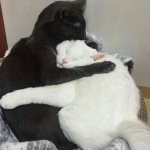Considering pet insurance for your cat is a significant decision that can provide peace of mind and financial support during unexpected health issues. Here’s a detailed exploration of cat insurance, how it works, what it covers, the cost, and whether it’s worth considering:
How Cat Insurance Functions:
- Cat insurance operates similarly to human health insurance, covering a portion of vet expenses for an agreed-upon premium.
- Typically, you pay the full veterinary bill and then submit a claim for reimbursement from the pet insurance company.
Coverage Types:
- Accident-Only Plans: Cover physical accidents like fractures, cuts, and ingestions of foreign objects.
- Accident and Illness Plans: Include coverage for various illnesses such as hyperthyroidism, renal disease, diabetes, and hereditary conditions (usually diagnosed after policy inception).
- Wellness Plans: Cover routine preventive care like vaccines, spaying/neutering, and lab work. Often sold as add-ons or separate plans.
Pre-Existing Conditions:
- Most pet insurance excludes pre-existing conditions, i.e., any health issues existing before the policy’s start date.
Cost Factors:
- Premium costs vary based on your cat’s breed, age, health status, plan type, deductible amount, and reimbursement level.
- On average, accident and illness plans cost about $28 per month, while accident-only plans average about $11/month. Wellness plans could cost around $25 per month.
Worth of Cat Insurance:
- Cat insurance offers peace of mind and financial aid during unforeseen medical emergencies or chronic diseases.
- Assess the policy’s cost against your potential ability to cover significant veterinary expenses.
Enrollment Process:
- Consult your vet for insights on pet insurance options and policies.
- Research different insurance companies, read policy materials thoroughly, and inquire about coverage specifics and support options.
Choosing Coverage for Different Life Stages:
- Younger cats might benefit from wellness plans for routine care and accident-only coverage due to their curiosity.
- Older cats may benefit more from comprehensive plans, but it’s advisable to obtain coverage while they’re healthy to avoid pre-existing condition exclusions.
Considering your cat’s health, age, and potential medical needs, weighing the costs versus potential benefits of insurance can aid in making an informed decision. Consult your vet and carefully review policy details to choose coverage that aligns with your cat’s needs and your financial circumstances.




